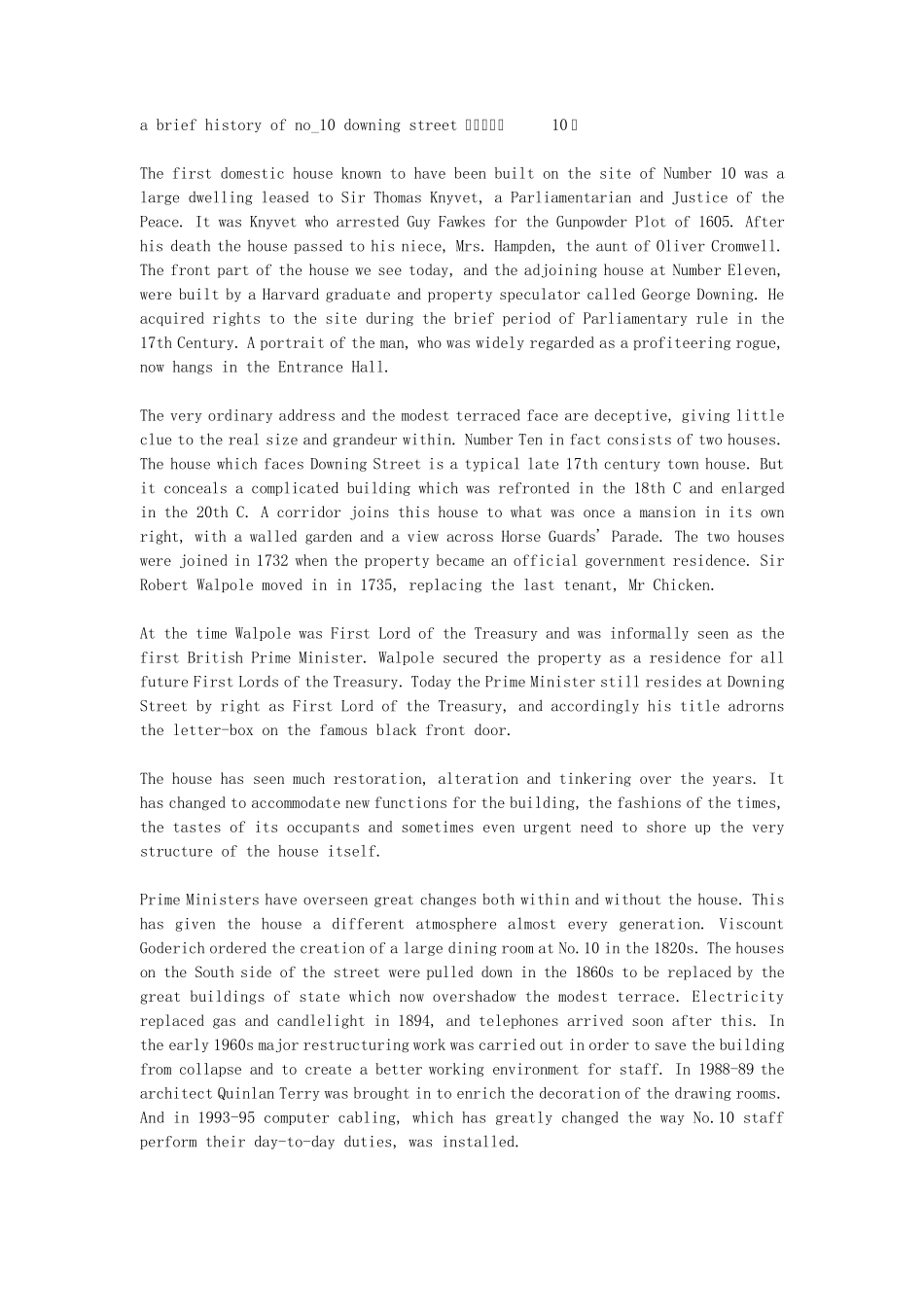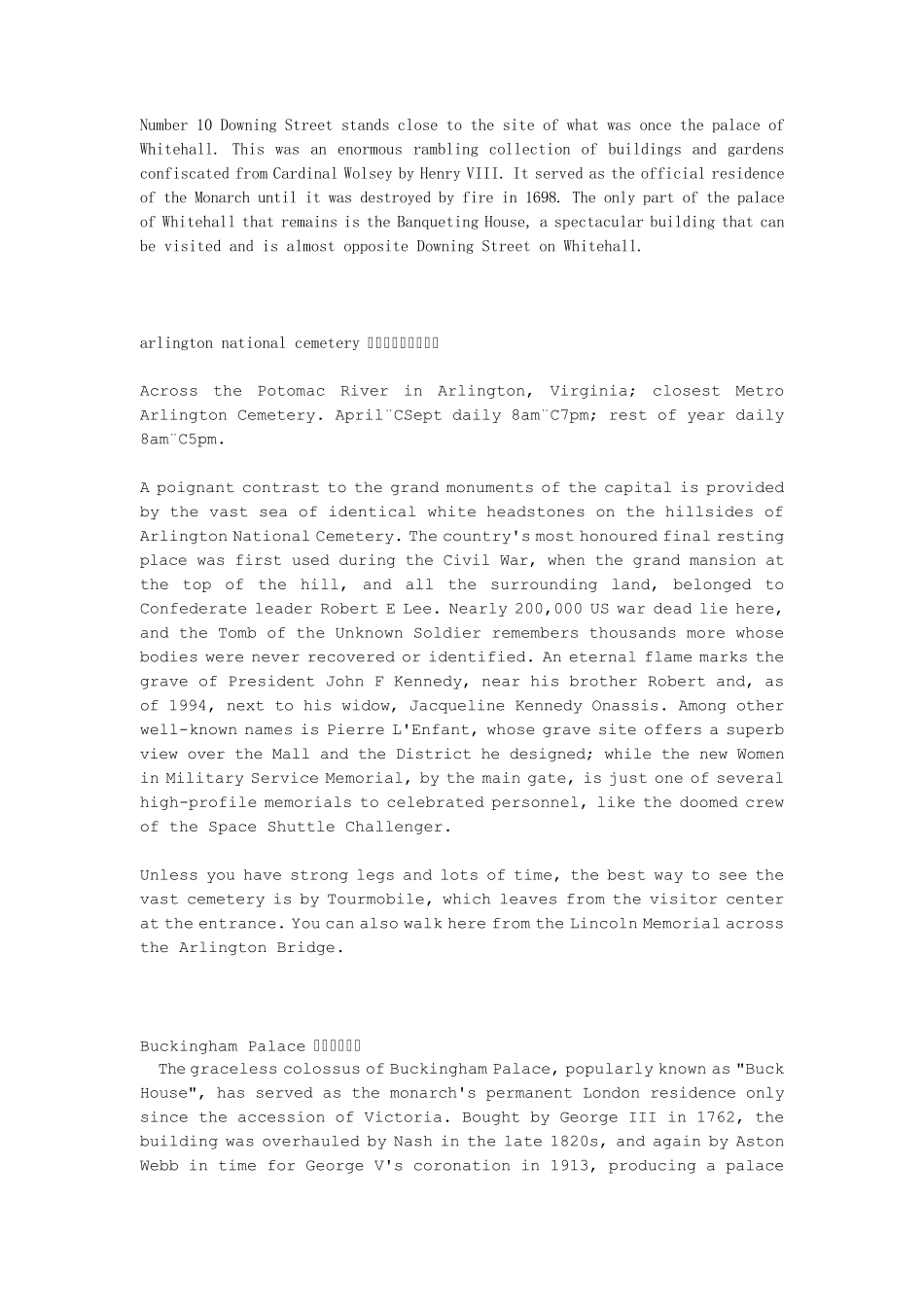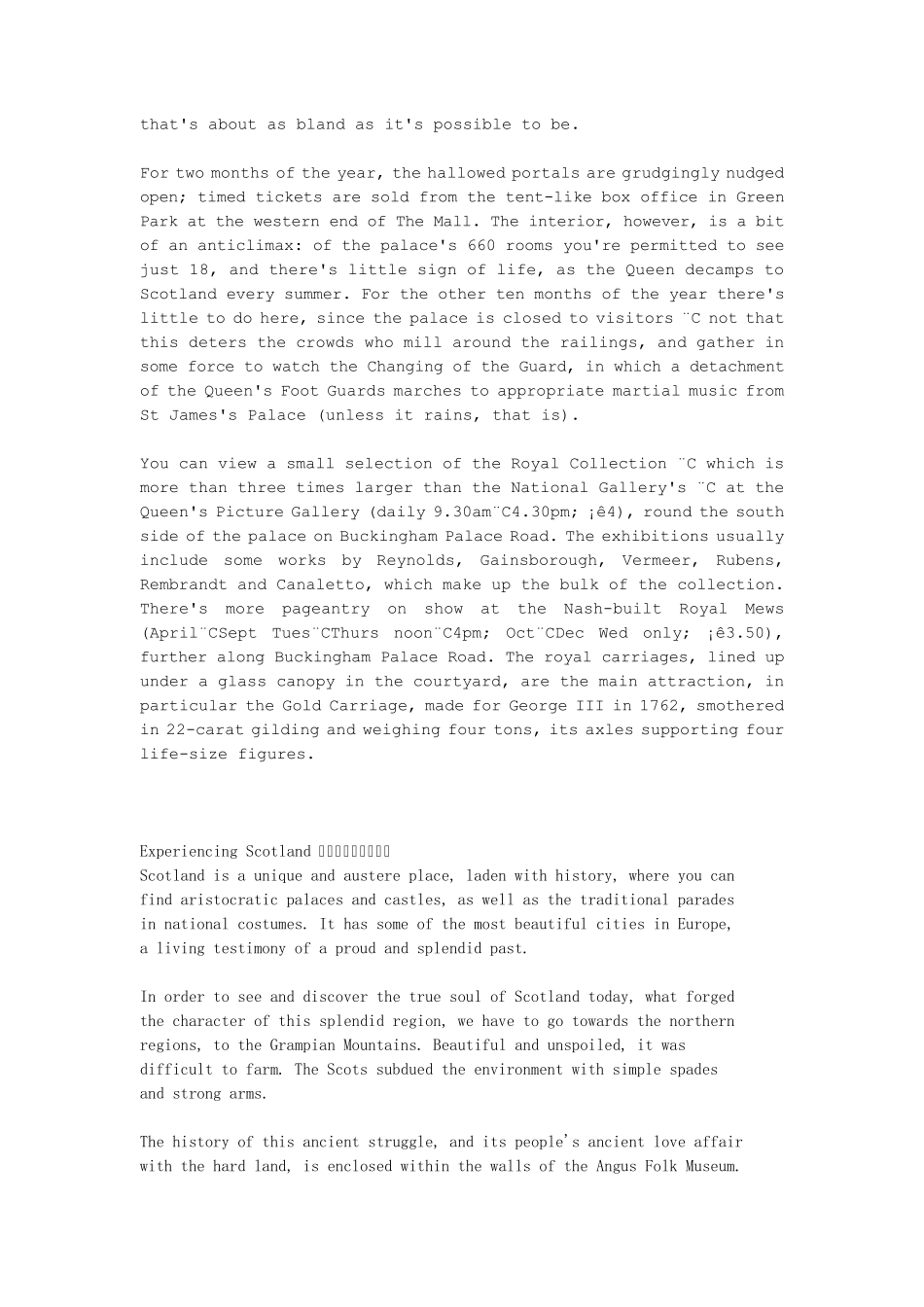a brief history of no_10 downing street 英国唐令街10 号 The first domestic house known to have been built on the site of Number 10 was a large dwelling leased to Sir Thomas Knyvet, a Parliamentarian and Justice of the Peace. It was Knyvet who arrested Guy Fawkes for the Gunpowder Plot of 1605. After his death the house passed to his niece, Mrs. Hampden, the aunt of Oliver Cromwell. The front part of the house we see today, and the adjoining house at Number Eleven, were built by a Harvard graduate and property speculator called George Downing. He acquired rights to the site during the brief period of Parliamentary rule in the 17th Century. A portrait of the man, who was widely regarded as a profiteering rogue, now hangs in the Entrance Hall. The very ordinary address and the modest terraced face are deceptive, giving little clue to the real size and grandeur within. Number Ten in fact consists of two houses. The house which faces Downing Street is a typical late 17th century town house. But it conceals a complicated building which was refronted in the 18th C and enlarged in the 20th C. A corridor joins this house to what was once a mansion in its own right, with a walled garden and a view across Horse Guards' Parade. The two houses were joined in 1732 when the property became an official government residence. Sir Robert Walpole moved in in 1735, replacing the last tenant, Mr Chicken. At the time Walpole was First Lord of the Treasury and was informally seen as the first British Prime Minister. Walpole secured the property as a residence for all future First Lords of the Treasury. Today the Prime Minister still resides at Downing Street by right as First Lord of the Trea...


